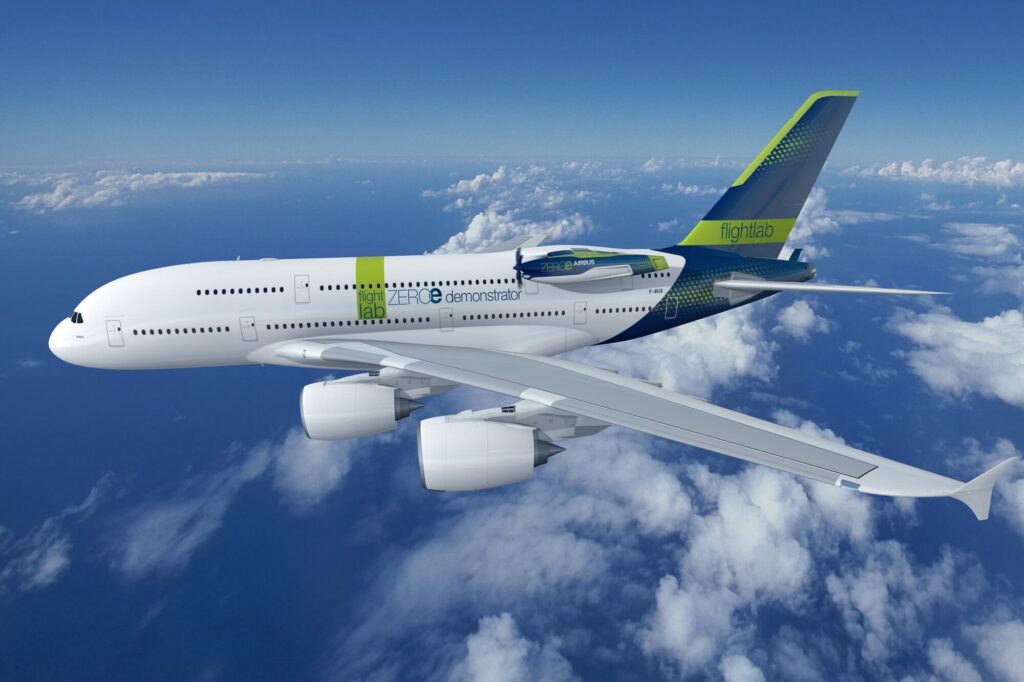On day one of the Airbus Summit 2022 on November 30, 2022, the manufacturer unveiled its hydrogen-powered zero-emission engine. The fuel cell power plant will be considered as one of the potential options for the emissions-free aircraft that is scheduled to enter service in 2035.
The turboprop-like engine will convert hydrogen into electricity to power itself.
“Fuel cells are a potential solution to help us achieve our zero-emission ambition and we are focused on developing and testing this technology to understand if it is feasible and viable for a 2035 entry-into-service of a zero-emission aircraft,” said Glenn Llewellyn, the Vice President of Zero-Emission Aircraft at Airbus. According to Llewellyn, such technology-based engines “may be able to power a one hundred passenger aircraft with a range of approximately 1,000 nautical miles”.
“By continuing to invest in this technology we are giving ourselves additional options that will inform our decisions on the architecture of our future ZEROe aircraft, the development of which we intend to launch in the 2027-2028 timeframe,” he added.
ZEROe demonstrator
The propeller engine was not the only propulsion system to be revealed by Airbus, as the ZEROe demonstrator was also rolled out.
According to the planemaker, the fuel cell engine will begin ground and flight tests in the middle of the decade. It will power the ZEROe demonstrator, which is a to be converted Airbus A380, Manufacturer’s Serial Number (MSN) 1. The double-decker will have a fifth engine installed on the upper left side of the aircraft just behind the wing. Airbus is currently modifying the jet to carry liquid hydrogen tanks and fuel distribution systems.
The ZEROe demonstrator will also be equipped with a hydrogen combustion engine, akin to a regular jet engine seen on today’s aircraft. Much like the propeller power plant, the combustion engine will be mounted along the rear fuselage and coupled with a hydrogen distribution system. The difference is that liquid hydrogen will be transformed into a gaseous state and introduced into the engine via combustion, powering the aircraft throughout flight.
The combustion engine will be a modified General Electric (GE) Passport, a derivative of the CFM LEAP turbofan. CFM, a joint version of GE and Safran Aircraft Engines, will modify the Passport for it to be able to run on hydrogen.
“The A380 MSN1 is an excellent flight laboratory platform for new hydrogen technologies. It’s a safe and reliable platform that is highly versatile to test a wide range of zero-emission technologies,” said Mathias Andriamisaina, Airbus’ ZEROe Demonstrator Leader.
According to Andriamisaina, the platform of the double-decker is safe, reliable, and highly versatile. Due to its sheer size, the aircraft “can comfortably accommodate the large flight test instrumentation that will be needed to analyze the performance of the hydrogen in the hydrogen-propulsion system,” he added.
The hydrogen tanks, combustion engine, and distribution system will be tested on the ground individually and then collectively, the manufacter said. If all goes well, the hydrogen-powered Airbus A380 will take to the skies for a flight test, which is expected to take place in the next five years.
On November 28, 2022, Rolls-Royce announced that the company and easyJet had completed the first-ever hydrogen-powered regional jet engine test, using the Rolls-Royce AE2100-A engine.

